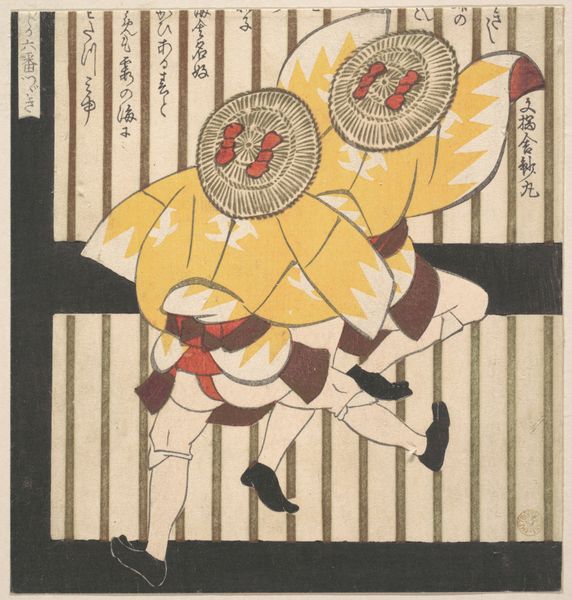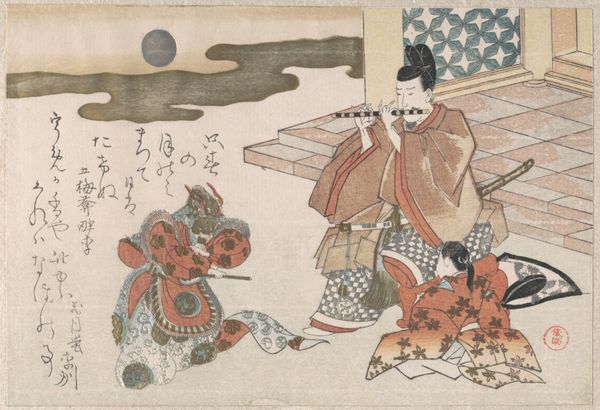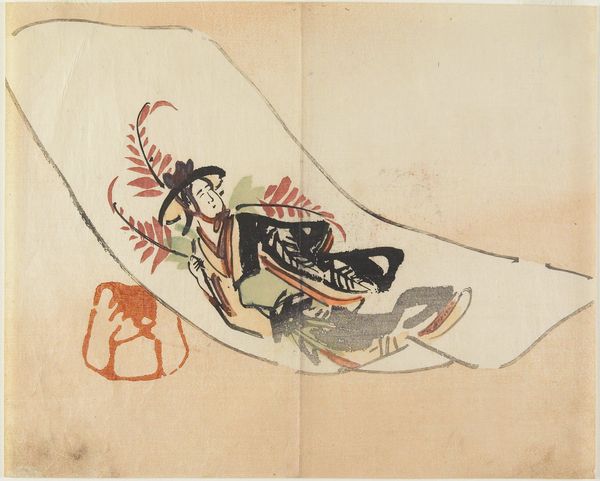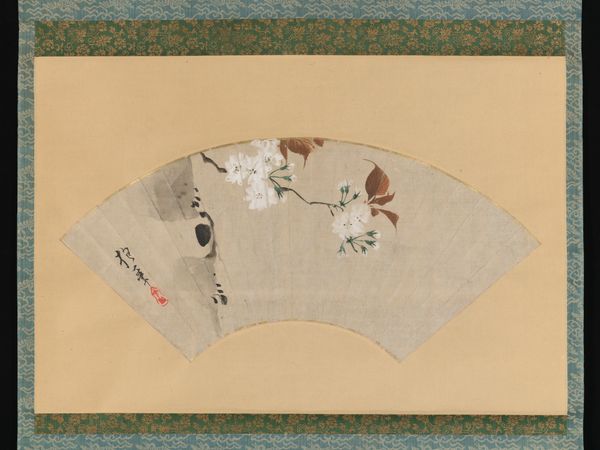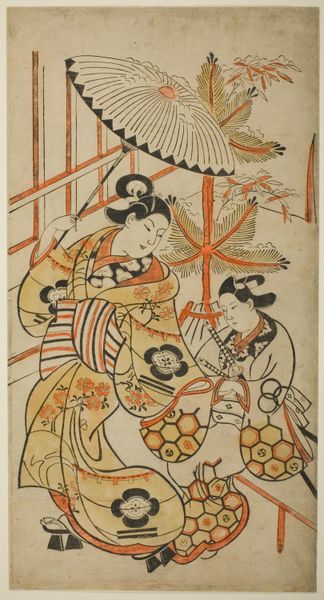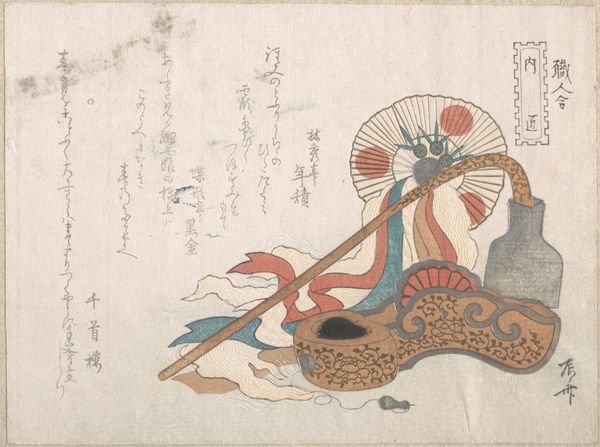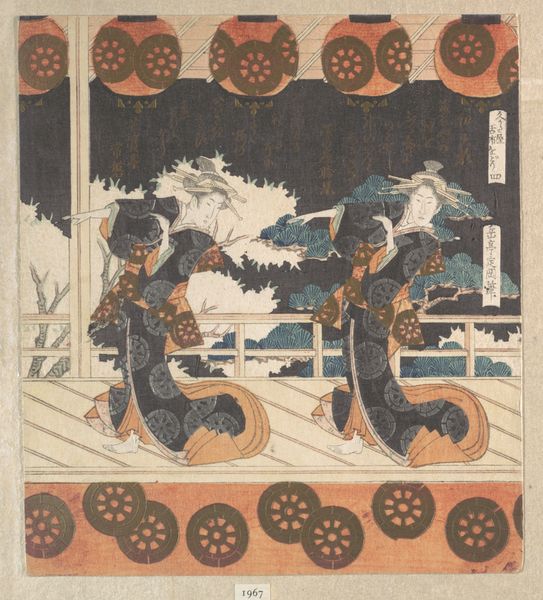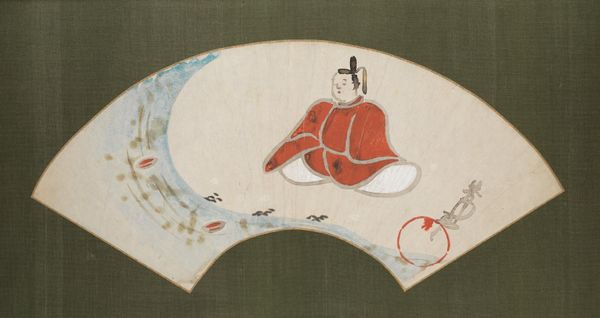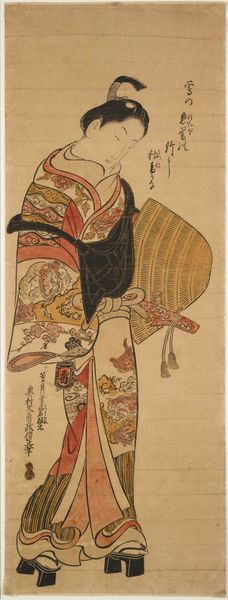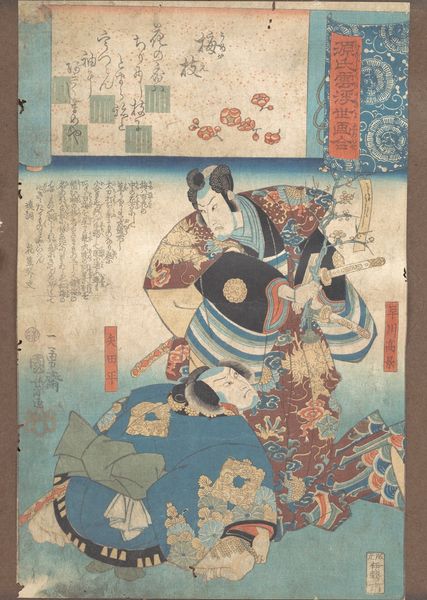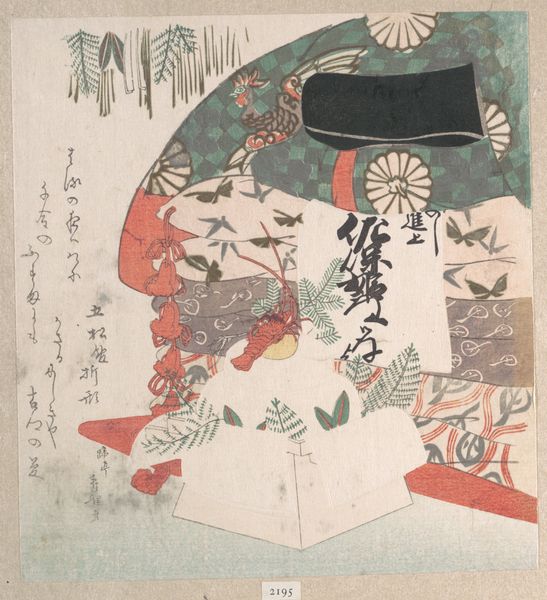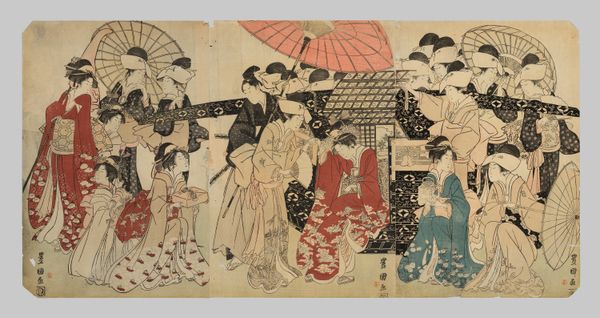
Sparrow dancers, from "A Set of Six for the Katsushika Circle (Katsushika rokuban tsuzuki)" c. 1827 - 1828
0:00
0:00
print, watercolor
# print
#
asian-art
#
ukiyo-e
#
figuration
#
watercolor
Copyright: Public Domain
Editor: This is "Sparrow Dancers, from A Set of Six for the Katsushika Circle" by Yashima Gakutei, dating back to around 1827 or 1828. It's a watercolor print, and it feels so energetic! These figures seem caught in mid-step. What narratives do you think are at play here? Curator: Well, consider the context: late Edo period Japan, a time of rigid social structures. Ukiyo-e prints like this often served as a form of subversive expression. The "dancers" are likely commoners, perhaps even performers, masked by those distinctive hats. How might these masks and stylized movements relate to ideas of identity and social roles at the time? Editor: So, are you suggesting the dance itself could be a commentary? A hidden critique maybe? Curator: Precisely. Think about who these prints were made for—the burgeoning merchant class, eager for representations of their own lives, perhaps with a wink and a nudge. These “sparrow dancers” may represent freedom found in art. The energetic movement contrasted to the stiff social conventions of the time. What do you think the arrangement and presentation of the dancers does? Editor: That's fascinating. I guess the panelled composition then reflects a society also divided by class and convention. Each dance is within their own sectioned space. Curator: And those writings—they provide context, right? Perhaps even clues, or ironic counterpoints to the visual narrative. It's important to also notice what's omitted, what's unspoken. How do you think an art piece could challenge norms or inspire conversations? Editor: I'm beginning to see this print not just as a depiction of dancers, but as a multi-layered statement about identity, class, and social freedom through performance. Thank you, this changed how I view the artwork. Curator: Art is a reflection of life, the lives we choose to reveal and those we are asked to keep secret. Analyzing how artists visualize the constraints, as well as freedoms, is where we gain valuable cultural understanding.
Comments
No comments
Be the first to comment and join the conversation on the ultimate creative platform.
